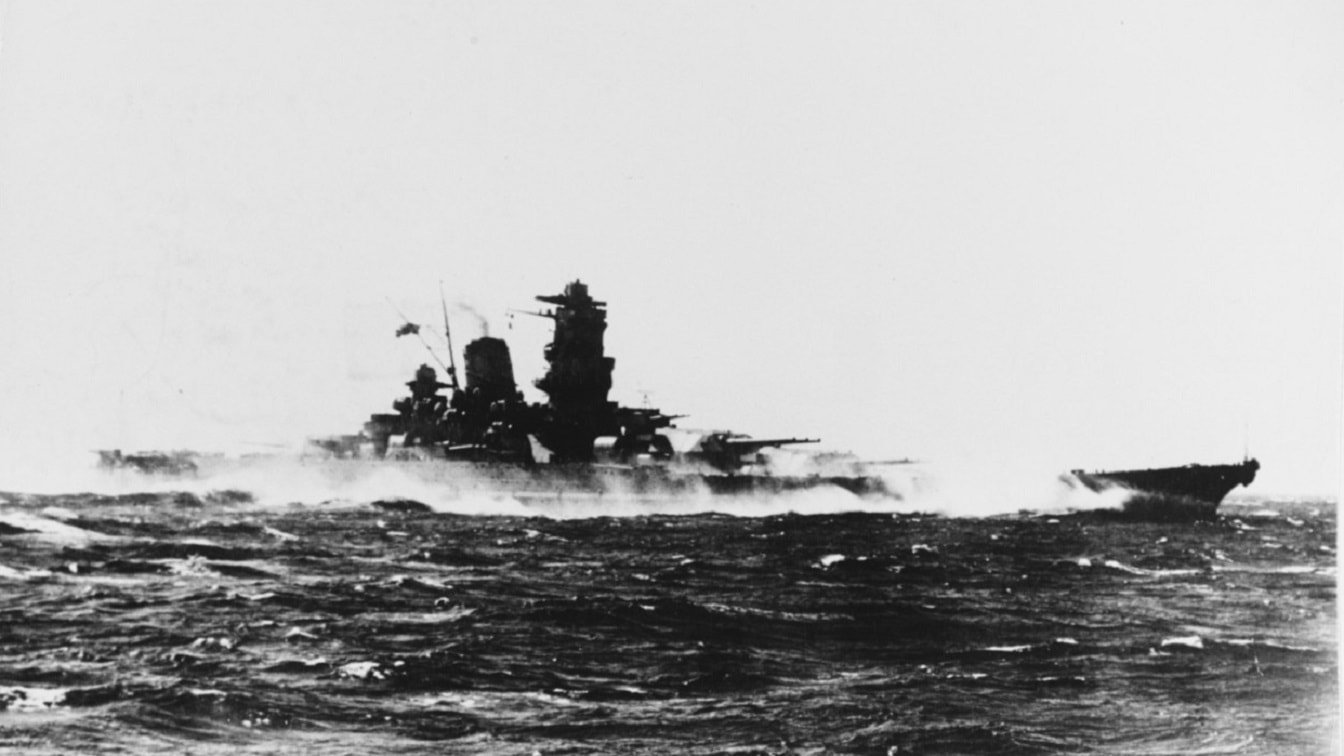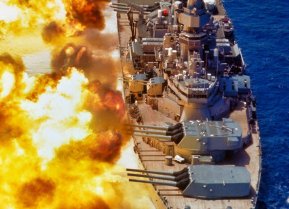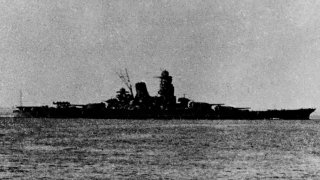Yamato: The Biggest Battleship Ever with the Biggest 'Guns' Ever
The Japanese foresaw that the Yamato would need to defend itself against multiple enemies at once. Accordingly, the Yamato was designed with heavy armor plating.
Once isolationist, Japan spent the 1930s and 40s in one of modern history’s most aggressive pushes to establish regional hegemony. Imperial Japan spread its dominion throughout the Indo-Pacific, establishing footholds throughout the Asian continent, and launching attacks as far away as Australia and Hawaii.
To facilitate such an aggressive push, the island nation relied heavily upon naval technology to deliver firepower and manpower over oceans and onto distant shores.
The Yamato-class battleship is one such vessel that Imperial Japan developed to enact its hegemonic strategy.
Actually, at the time, the Yamato was the biggest battleship, with the biggest guns, ever built.
Entering service in 1941, the Yamato was the culmination of research and development that had occurred throughout the 1930s. The Yamato entered service just in time for Imperial Japan’s most epic and consequential confrontation: war with America.
Yamato Had Some Big Guns
The Yamato wouldn’t have been possible had Japan adhered to League of Nations naval treaties that prevented the production of war vessels exceeding a certain size. The Japanese were originally signatories of the naval treaties. But when Japan renounced their commitment, the stage was set for a battleship that exceeded the limitations that the League of Nations imposed.
Initially, Japanese war planners considered a variety of battleship designs, ultimately settling on what would become the Yamato – and what would become the biggest battleship ever built to date.
The Yamato was designed with firepower in mind. For armament, the Yamato featured three 3-gun turrets mounting 46 cm/45 caliber Type 94 naval guns – at the time, the biggest guns ever placed on a warship. Each gun was about 70 feet long, weighing about 147 metric tons. The guns could gurl a 3,220-pound armor piercing shell at a range of 26 miles. It is ideal for assaulting foreign lands from the sea.

The Yamato also featured impressive secondary armament, including the 127 mm heavy and 25 mm light anti-aircraft guns. For heavy anti-aircraft defense, the Yamato relied on a dozen 40-caliber 127 mm Type 89 dual-purpose guns in six double turrets.
In sum, the Yamato had a lot of firepower. But the ship was designed with defense in mind, too.
Yamato’s Armor
The Japanese foresaw that the Yamato would need to defend itself against multiple enemies at once. Accordingly, the Yamato was designed with heavy armor plating. Naval historian Mark Stille called the Yamato’s armor “an unparalleled degree of protection in surface combat.”

Along each side, the Yamato featured 16-inch thick armor. The lower belt of armor was still 8-inches thick. And the armor surrounding the main turrets measured 26 inches thick.
To withstand torpedo attacks from enemy submarines and torpedo bombers, the Yamato featured multiple bulkheads, which used both belt armor and void spaces – and was designed to withstand a 400 kg TNT charge.
Yet despite the impressive armor configurations, all three Yamato battleships that entered service were sunk. The namesake Yamato was sunk en route to Operation Ten-Go as part of the Battle of Okinawa when 10 American torpedoes and seven American bombs felled the battleship, killing 2,498 of her 2,700 sailors.
The other two Yamato battleships, the Musashi and the Shinano suffered similar fates. The Musashi sank after suffering 17 bomb hits and 19 torpedo hits. 1,023 of the Musashi’s 2,399 sailors were killed. Similarly, the Shinano, which had been repurposed as an aircraft carrier, sank after taking four torpedo hits from the USS Archerfish submarine. 1,435 of the Shinano’s sailors were killed.
Harrison Kass is a prolific defense writer. An attorney, pilot, guitarist, and minor pro hockey player, Harrison joined the US Air Force as a Pilot Trainee but was medically discharged. Harrison holds a BA from Lake Forest College, a JD from the University of Oregon, and an MA from New York University. Harrison listens to Dokken.
All images are Creative Commons.


